The best Waves plugins for vocals 2024 review
What are the best Waves plugins for vocals? In this guide you will find my recommendations.
We’re going to tackle the plugins in alphabetical order. First, a short summary list for those who just want the info quick. Then, I’ll introduce what each plugin does, tell you why I like it and give you my tips on using it.
If you have any further questions, let me know in the comments section.
Disclosure for transparency: I’m affiliated with Waves and although I own many Waves plugins, they provided me with a limited 3-month license for testing and reviewing the latest versions. I only ever promote products I like. Please don’t buy anything unless you’re sure it’s what you need. Check out this post about how to make better buying decisions.
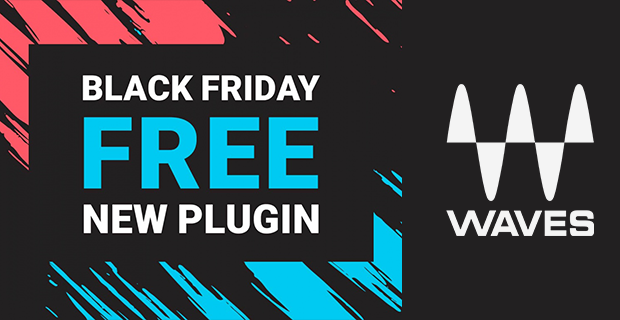
These are the best Waves plugins for vocals:
- Waves Abbey Road Saturator
- Waves Butch Vig Vocals
- Waves DeBreath
- Waves Doubler
- Waves EMO-D5 Dynamics
- Waves H-Delay Hybrid Delay
- Waves H-Reverb
- Waves Ovox Vocal ReSynthesis
- Waves Renaissance Channel
- Waves Renaissance DeEsser
- Waves Renaissance Vox
- Waves Scheps Omni Channel
- Waves Vocal Rider
Waves Abbey Road Saturator
If you are looking for some attitude, vibe and strength for your vocal, the Waves Abbey Road Saturator is an excellent option. It features sections for pre and post EQ, compander and saturation. It works great in most situations and it’s quick and easy to get good results with it.
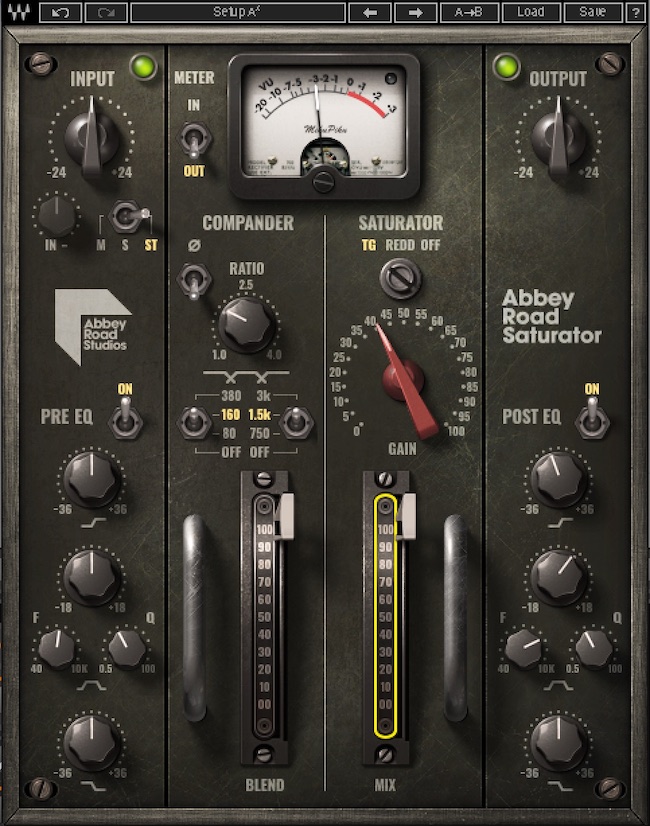
Why is it good?
The compander section is what makes this plugin special to me. The compander compresses the Pre EQ signal, passes it through low-pass and high-pass filters, and then expands it. This excites the signal and provides control over how different frequencies are distorted based on the compander ratio.
Sound complicated? Not to worry. Just play around with it until you like what you’re hearing. That’s what I do anyways. It usually doesn’t take long to get a nice solid vocal sound going.
I think this is one of the best Waves plugins for rap vocals as the compander allows you to get that super tight up front sound quite easily.
Waves Abbey Road Saturator tips
- It’s quite easy to end up with an overly bright sound with this plugin. The Post EQ section is there for a reason. Use it to counter for imbalances.
- Even though the plugin is called “Saturator”, less is more with that. The saturation can start to sound quite brittle if you push it too hard. A little bit goes a long way – especially when mixing vocals.
Link: Waves Abbey Road Saturator
Waves Butch Vig Vocals
If you’re not a technical person and are looking for a convenient one-stop-shop for mixing vocals, then the Butch Vig Vocals plugin might be the one for you. It has all your basic vocal processing needs covered in a very nice package.
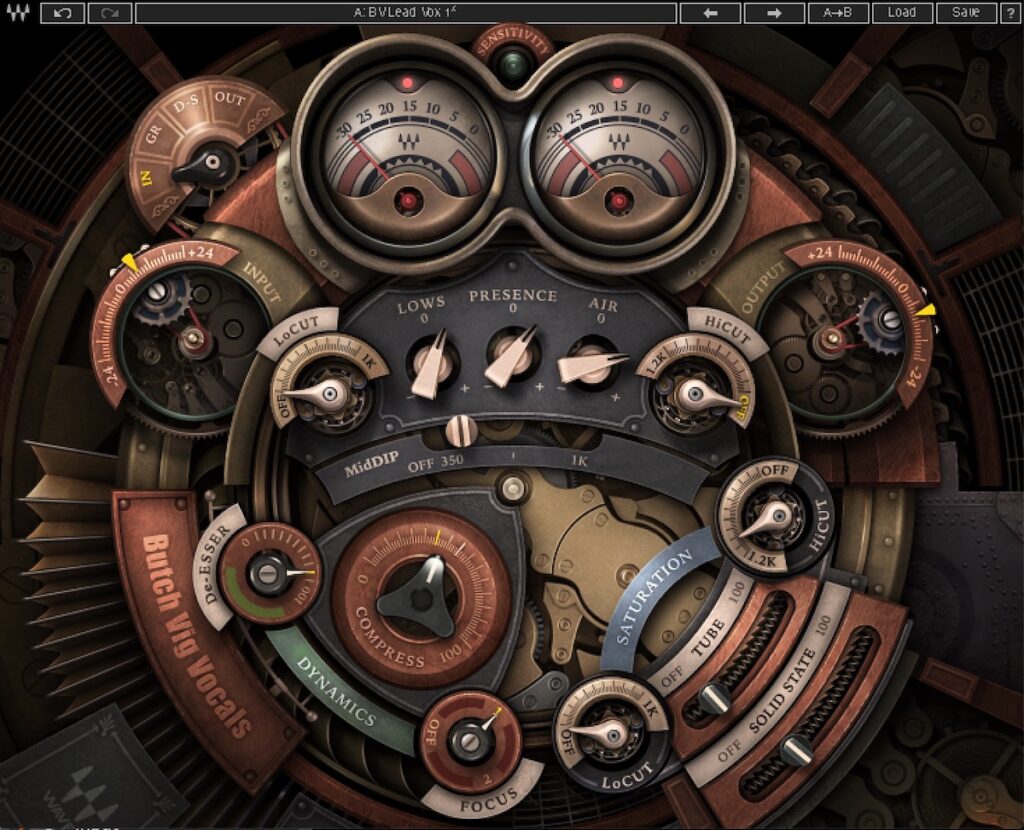
Why is it good?
I prefer Butch Vig Vocals over the Waves CLA Vocals or the Maserati VX1 plugins for example.
Rather than focusing on adding a bunch of effects, this plugin is all about useful and finely calibrated controls. Things that you actually need to solve problems and get the basic sound right. If you’re new to working with vocals, playing around with this plugin will teach you what to listen for when mixing vocals. The controls feel very well focused and precise.
Waves Butch Vig Vocals tips
- Adjust the input correctly. The plugin is designed to work optimally when the input sensitivity led at the top is blinking green or yellow (not red).
- Besides your ears, you can use the In and Out meter switches (top left corner) to monitor the relationship between your input and output volume. Try to keep them the same. It will help you in evaluating the sound.
Link: Waves Butch Vig Vocals
Waves DeBreath
Waves DeBreath is a useful companion for mixing vocals. Breath sounds are often a problem as the microphone picks them up much louder than they actually are, and compression tends to make it worse. This results in breath sounds and gasps that poke through the mix in a nasty way.
DeBreath uses an algorithm to detect the breath sounds in a vocal take (with a little bit of help from you). You can then reduce the level of the breaths without affecting the rest of the material. Traditionally this is tedious work that is carried out in the edit manually.
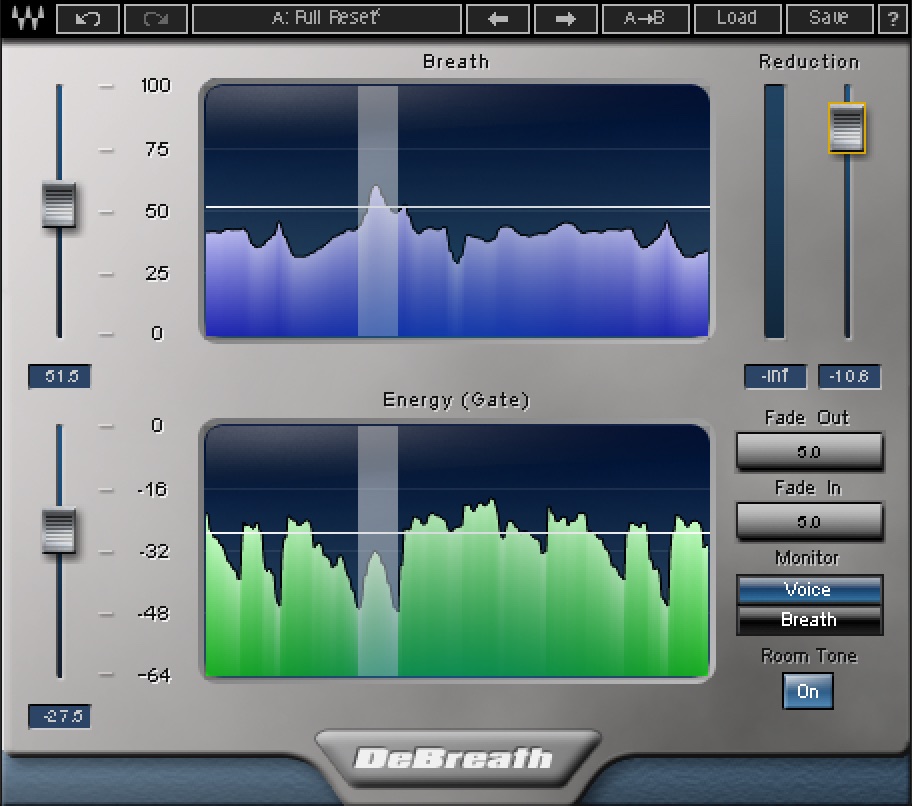
Why is it good?
Because it works! The plugin gives you two thresholds to set – Breath and Energy. When Breath is above the threshold and Energy is below the threshold (as seen in the picture above), the plugin classifies the material as breathing and reduction can be applied.
I have used it with several different singers and it always worked beautifully. I still recommend demoing the plugin first in your specific use case before buying though.
Waves DeBreath tips
- Instead of removing the breaths, with many types of music it often sounds better if you just reduce them a little bit in volume. Just enough so that they’re not jumping through the mix.
- You can use the “Room Tone” function to add some subtle room tone to fill in the gaps.
- Make sure you’re hitting your targets properly by monitoring the breath only also. Just hit the “Breath” button.
Link: Waves DeBreath
Waves Doubler
Waves Doubler is a classic plugin. It’s a sound enricher and a stereo widening effect, but can be used for all sorts of experimental stuff. It’s very useful for making vocals pop in the mix.
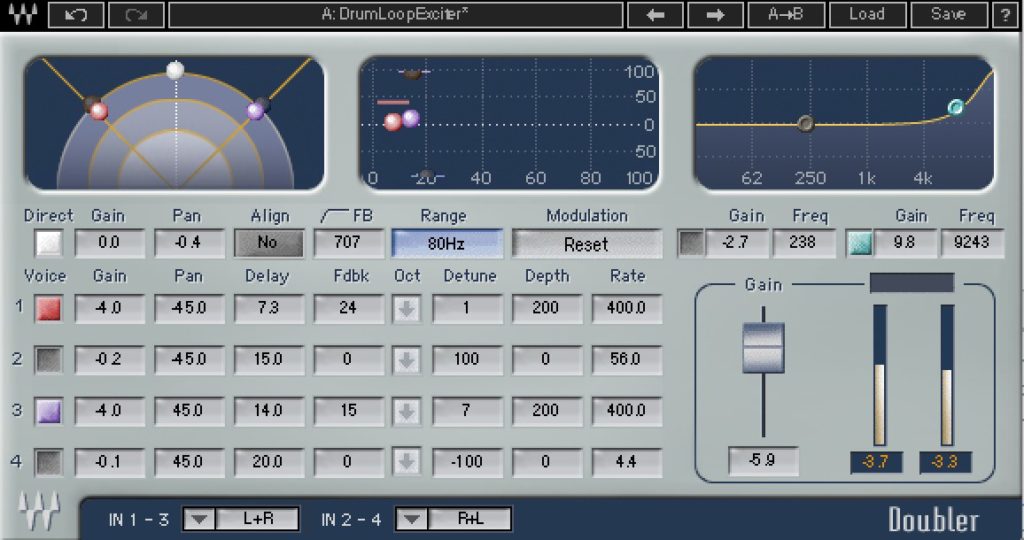
Why is it good?
Doubler is quite old school and that’s part of it’s appeal for me. Above all it sounds great. It is one of those plugins that just work and give you good results every time. It is very simple and straightforward to use. Doubler also has fantastic presets from many top mix engineers to explore.
Waves Doubler tips
- Use the modulation feature to add small amounts of movement. This can liven up a vocal in a very nice way.
- It might be tempting to go all out and use all 4 voices. But many times using only 2 can do the trick in a cleaner way by cluttering the mix less.
Link: Waves Doubler
Waves EMO-D5 Dynamics
If you’re looking for a complete dynamic toolkit for working with vocals – look no further. The Waves EMO-D5 Dynamics gives you gating, compression, levelling, de-essing and limiting. The EMO-D5 is a very clean sounding plugin. There’s no analog emulation or other funky stuff going on here as opposed to many other Waves compressors.
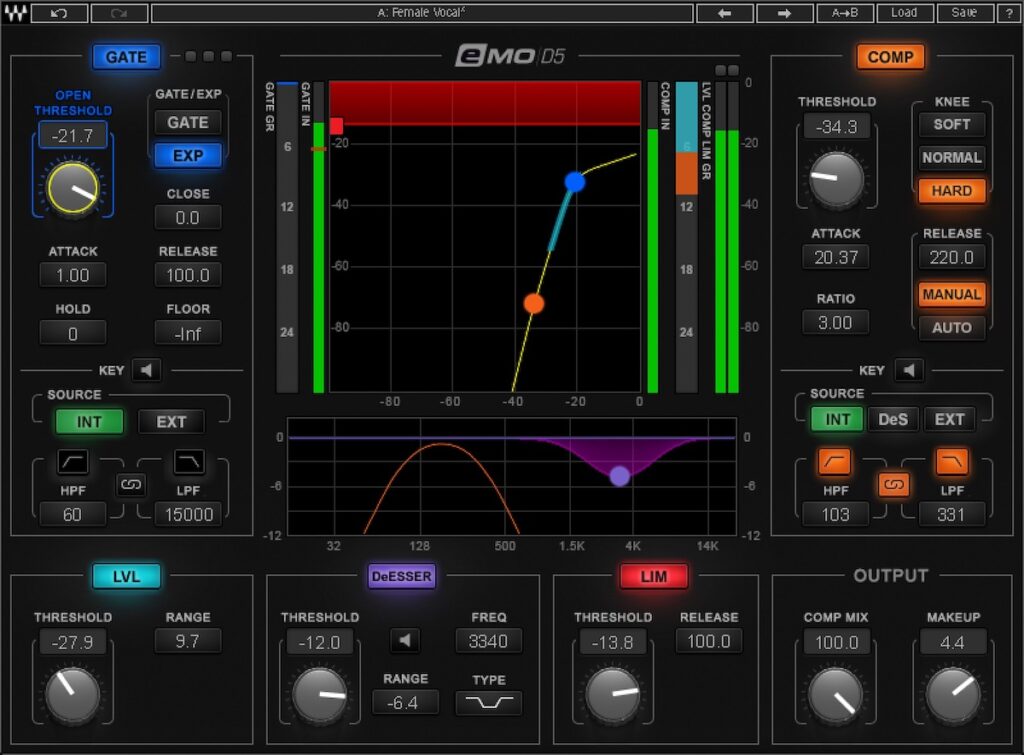
Why is it good?
The interface on the EMO-D5 is clear and very nice to use (it was actually designed to work well on touch screen interfaces, and that shows). It also gives you zero latency and low CPU consumption. The controls do what they’re supposed to. It’s a great package for mixing vocals.
Waves EMO-D5 Dynamics tips
- When mixing vocals, start by switching on the different sections individually one by one. It is easier to figure out what each section is doing that way.
- The plugin has very nice visual metering. If you’re unsure about what some of the visuals represent, it’s all very well explained in the product manual.
Link: Waves EMO-D5 Dynamics
Waves H-Delay Hybrid Delay
The delay is an essential vocal effect and the Waves H-Delay “just does it”.
From slap-back echo, ping-pong delay, and tempo-sync with modulation, to filtering, flanging, phasing, and more, H-Delay delivers real old school effects, controlled by a super intuitive interface.
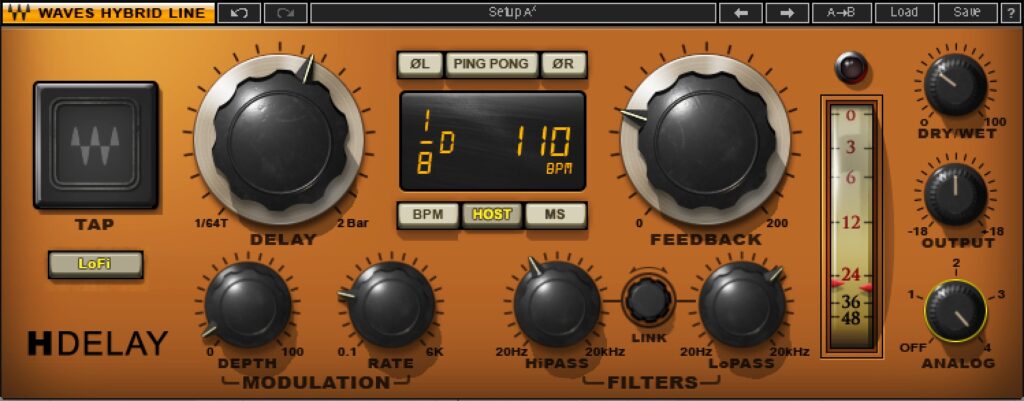
Why is it good?
In H-Delay I like that it’s easy to navigate, but most of all I like how it sounds. It has character and vibe. If I had to describe in one word how it sounds, I would say it sounds thick. But not in an obvious or obtrusive way.
H-Delay is one of those plugins that when you put it on, it almost always sounds good. Equally great for big dubby delay effects or short dimension delays.
Waves H-Delay tips
- The LoFi button emulates the sample rate reduction that many classic analog delay units sported by design. It gives the delay some really nice edge.
- Use the modulation parameters to bring slight movement to your delays. It can really bring the sound alive, especially when you are synced to a certain BPM.
Link: Waves H-Delay Hybrid Delay
Waves H-Reverb
A reverb can make or break a vocal. You need to have a good reverb in your arsenal when mixing vocals.
The Waves H-Reverb is designed to provide lush, spacious, warm reverberation effects. It’s based on FIR (Finite Impulse Response) technology.
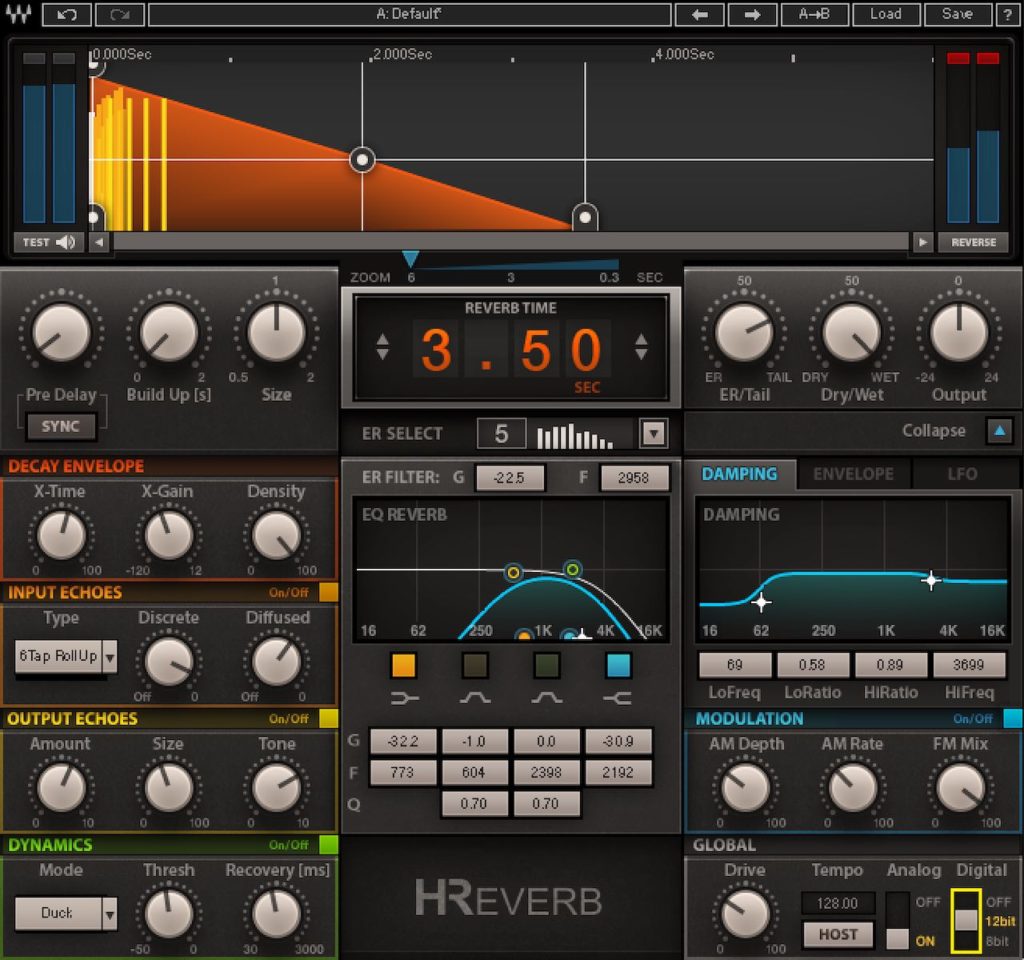
Why is it good?
I love exploring the presets in H-Reverb. It’s a great source for ideas. I especially like the “Hardware” category of presets which replicates many classic reverb units.
H-Reverb has many clever options to tailor the sound exactly how you want it. In that sense, it doesn’t feel like an impulse response reverb at all. In fact it’s more flexible than most algorithmic reverbs.
Waves H-Reverb tips
- The plugin installs with 2 different versions: H-Reverb and H-Reverb (long). The difference is that the regular version goes up to 6 seconds in decay time and the (long) version goes up to 12 seconds. This gives you the option of using a less CPU-intensive plugin (regular version) in most situations, while still having the ability to do the really long reverbs if you wish.
- The Global section has several options for giving your reverb different characters. My favourite is the “Drive” knob. It pushes the input gain against a clipper, creating a similar effect where the input of a hardware reverb unit is being pushed hard (I still use many hardware reverbs too and I push their inputs all the time).
- You can use the “Duck” feature to make the wet reverb signal duck when input signal is present. This is especially great in dense mixes where you want to maximise the impact of the direct vocal. Also equally great as a creative effect.
Link: Waves H-Reverb
Waves Ovox Vocal ReSynthesis
The Waves Ovox allows you to create voice-based musical effects without using a keyboard. It’s very easy to turn your vocal upside down into something completely crazy yet musically interesting. The plugin is designed for vocals but also works well for experimenting with different instruments.
Ovox has so many cool things going on. Without going into all the details, you can use it to get all manners of autotune and vocoding type effects. Just browse the presets and you’ll quickly realise it’s endless.
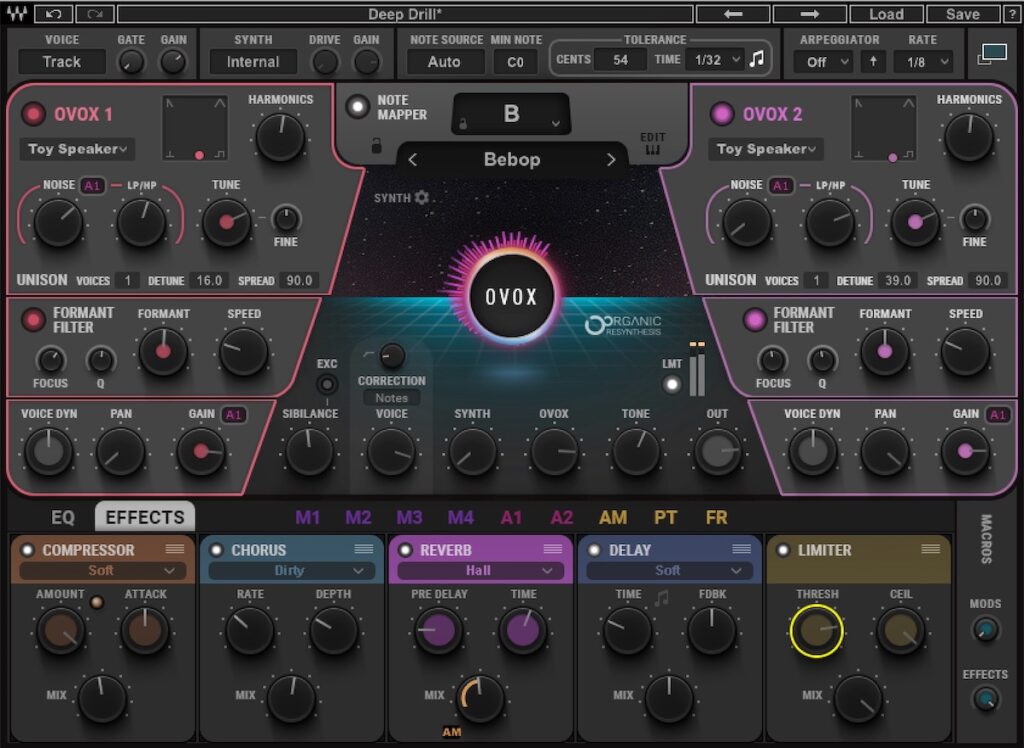
Why is it good?
Waves Ovox is a ton of fun and a great source of inspiration. It always gives you something unexpected but cool. Yet, it can also be used in subtle and deliberate ways as well. It’s very adaptable, too. It comes with lots of preset chords, scales and harmonies and you can edit them to your liking.
Waves Ovox Tips
- Ovox can seem quite extreme at first, but try adjusting the “Voice”, “Synth” and “Ovox” dials in the mixer section to achieve more subtle effects. You could also use it on a FX bus to enhance the vocal sound you have going.
- The plugin only shows the top part of the interface by default. See the icon with two squares in the top right corner? Use that to expand the plugin to show the very powerful EQ, FX and modulation sections.
- It’s a very deep plugin. Read the manual to understand it properly.
Link: Waves Ovox Vocal ReSynthesis
Waves Renaissance Channel
The Waves Renaissance Channel is a straightforward channel strip with EQ, gate and compression sections with good sidechain controls (so it does de-essing, too). It’s all about simplicity and functional design. The compressor has an Rvox mode which is specifically tuned to work well with vocals.
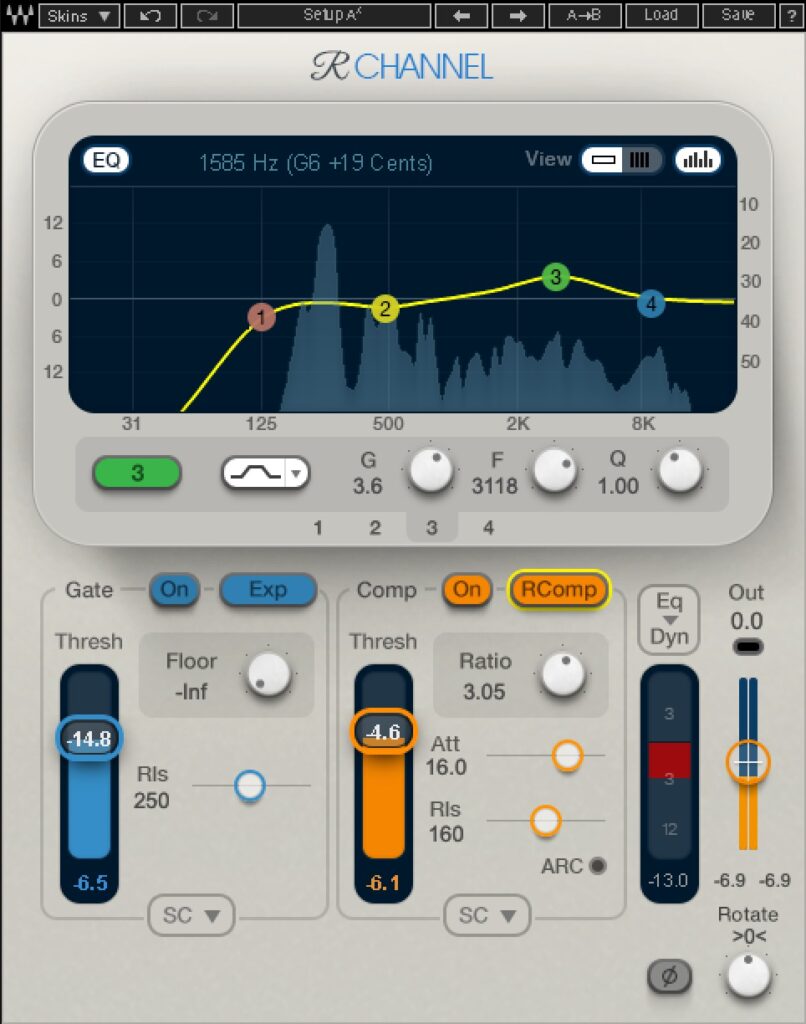
Why is it good?
The Waves Renaissance Channel is a very utilitarian plugin that gets the job done without fuss and sounds good. The spectrum analyser is very helpful in identifying possible problem areas.
If you’re just looking for a simple channel strip that works and is easy to use, I would recommend this one. If you’re looking for something with all the bells and whistles, take a look at the Scheps Omni Channel below.
Waves Renaissance Channel tips
- The plugin has presets from something like 40 professional mixing engineers! Browse them to get an idea of the many different use cases and how they like to set things up.
- The Rvox mode in the compressor works great for vocals in most situations.
Link: Waves Renaissance Channel
Waves Renaissance DeEsser
If you don’t have a good de-esser in your toolbox, then the Waves Renaissance DeEsser is a great choice. It is simple, intuitive, affordable and it gets the job done.
The Renaissance DeEsser combines the technologies used in Waves C4, Renaissance VOX, and Waves DeEsser with proprietary features that make it cleaner and more effective.
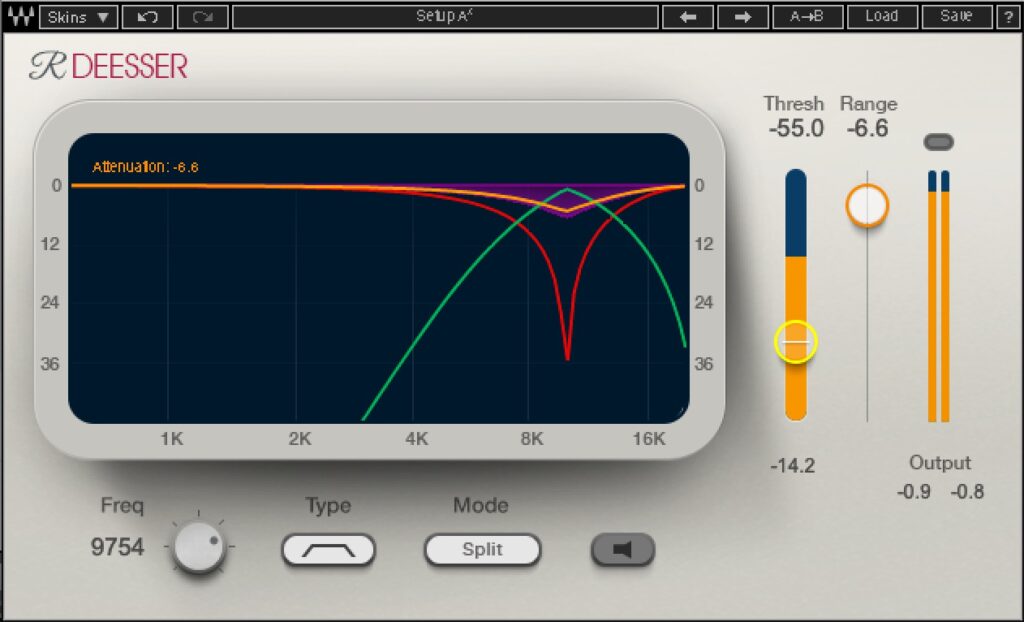
Why is it good?
In a de-esser I appreciate the ability to quickly be done with what I need to do. And this is exactly why I prefer the Renaissance DeEsser over the other Waves offerings. It has a clean interface and a very thoughtful feature set.
Phase-Compensated Crossover helps to avoid undesirable coloration and phase modulation that would otherwise occur as artefacts of the amplitude modulation applied by the compressor.
Adaptive threshold dynamically adjusts the threshold to the input signal, as opposed to typical “absolute value” threshold processors. This yields more natural-sounding results.
Waves Renaissance DeEsser tips
- Set it and forget it! I love it.
Link: Waves Renaissance DeEsser
Waves Renaissance Vox Vocal Compressor
Waves Renaissance Vox combines gating, compression and limiting into three super simple, one parameter controls.

Why is it good?
Renaissance Vox is not for everyone. But if you’re not very confident with using traditional compressors yet, it might be just the ticket for you. It works pretty great in most situations.
It may also work for someone who just quickly needs to get some compression going on for monitoring purposes, or to make podcast dialogue sounding better, for example. Especially when combined with the Waves Vocal Rider plugin.
Waves Renaissance Vox tips
- The Gain control is your limiter ceiling at the same time. Be careful not to crush your vocal with it.
- To hear the effect of the compressor without a change in level, link the Compression and Gain faders by drawing a box around them—they now move together.
Link: Waves Renaissance Vox
Waves Scheps Omni Channel
The Scheps Omni Channel is a very well designed set of mixing tools. It’s a true workhorse plugin. It has six different sections that you can rearrange freely:
- Saturation/filters
- Gate
- Compressor (3 different ones in fact: VCA, FET and Opto)
- De-esser
- EQ
- Insert (you can insert any Waves plugin that you own here)
Additionally there’ s an output section with monitoring controls and a brickwall limiter to control peaks.
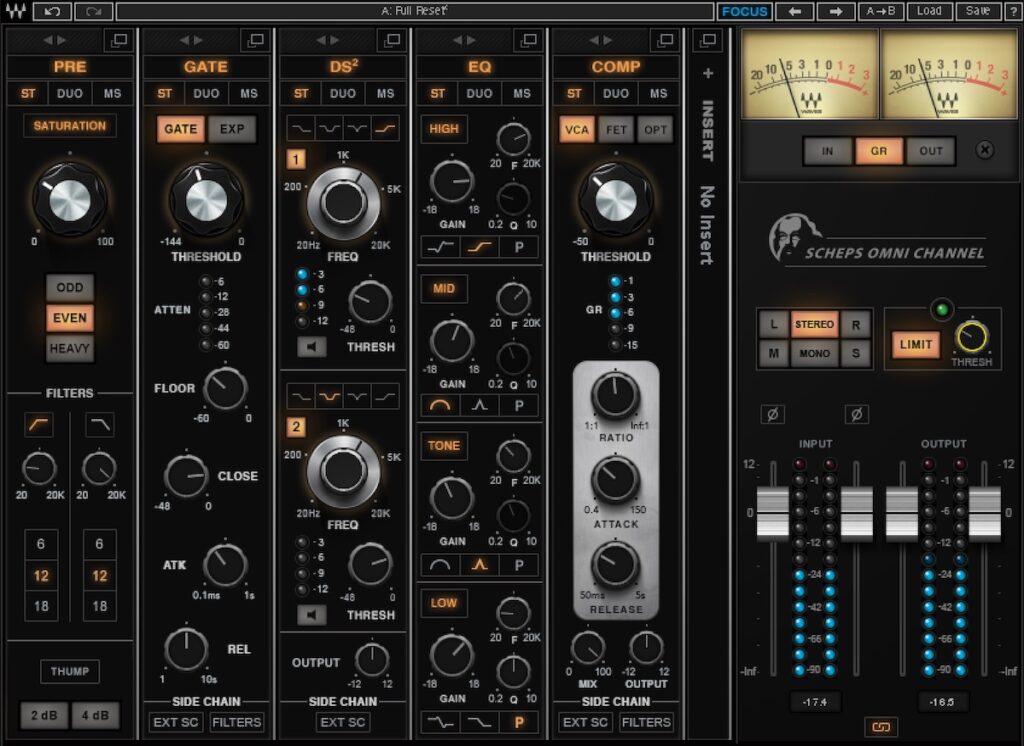
Why is it good?
The Scheps Omni Channel is my favourite channel strip out of all the ones in the Waves catalogue. In contrast to something like the Renaissance Channel, you can hardly call it simple. Yet it is very well thought out and the interface is nice.
The Scheps Omni Channel is both powerful and flexible. You can rearrange the different processing sections in any way like. The insert slot is very useful for vocals, as you could insert a reverb or a chorus right inside the chain, for example (it only works with other Waves plugins though).
Of course it sounds great, too. It has everything you need to make your vocals shine. A real workhorse plugin and absolutely one of the best Waves plugins for vocals.
Waves Scheps Omni Channel tips
- The metering/monitoring section is very useful and nicely laid out. The VU is great and I love having the mid/side/mono listening options there.
- Use the little square icons at the top right corner of each module to expand the interface and access further options.
- Play with the compressors – they all sound quite distinct and good in their own way. The FET is my fav. Great for an aggressive, in-your-face sound!
- I am not a huge fan of how the Saturation module sounds when pushed. So I prefer to go pretty easy on that and use other things for saturation.
- The gate is one of the best I’ve used. No matter if you want to use it for subtle cleanup or as a creative tool, it’s quick to find settings that work.
- Having the ability to gate the Mid and Side signals separately is very interesting!
- The Mid and Tone EQ bands are identical except in the wide mode, where Mid is wider and cleaner and Tone is narrower and more smeary. The Mid band is better for enhancing the natural character of the source. The Tone is better for making the source pop out and giving it some colour while still keeping it glued to the rest of the material.
Link: Waves Scheps Omni Channel
Waves Vocal Rider
Waves Vocal Rider offers to take some effort away from you by automatically adjusting the level of your vocal takes in order to make everything sound more even. All you need to do is set the target range of the vocal level in relation to the rest of the mix.
The plugin has some pretty clever controls and does a good job at levelling out vocals.
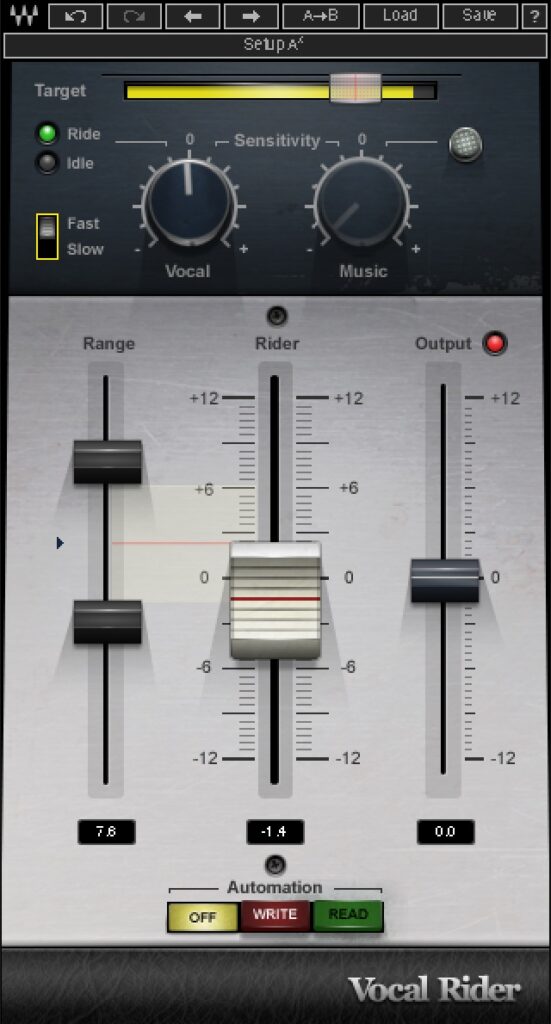
Why is it good?
Waves Vocal Rider does a great job of automatically evening out the volume differences in the recording. It also allows you to write volume automation and flip it into automation read mode, so that you can then adjust the levels manually.
You could also just let the Vocal Rider do a little bit of pre-leveling, while controlling the rest by hand.
Waves Vocal Rider tips
- Personally I’ve had the best results by following Vocal Rider with a compressor (the EMO D5 or RVox would work). I like to do a little bit of levelling with Vocal Rider first, and then add some compression. The levelling allows the compressor to operate more of the time within the most optimal range. This results in a more solid vocal sound with less weird artefacts.
- At any time, you can grab the big fader and make your own adjustments. As soon as you release it, Vocal Rider will continue working automatically. This can be very useful for recording automation
Link: Waves Vocal Rider
Best Waves plugins for vocals 2024 – summing up
There are a ton of plugins in the Waves catalogue to choose from for mixing vocals. When I started thinking about what are the best Waves plugins for vocals specifically, I used three pointers for narrowing down the options: 1) Sound, 2) Ease of use and 3) Value for money.
Instead of buying Waves plugins for the full price, I would recommend waiting out for a sale if you can. Waves are frequently rotating sales.
What are your thoughts? Any questions? Feel free to drop in a comment and I’ll do my best to help you out.
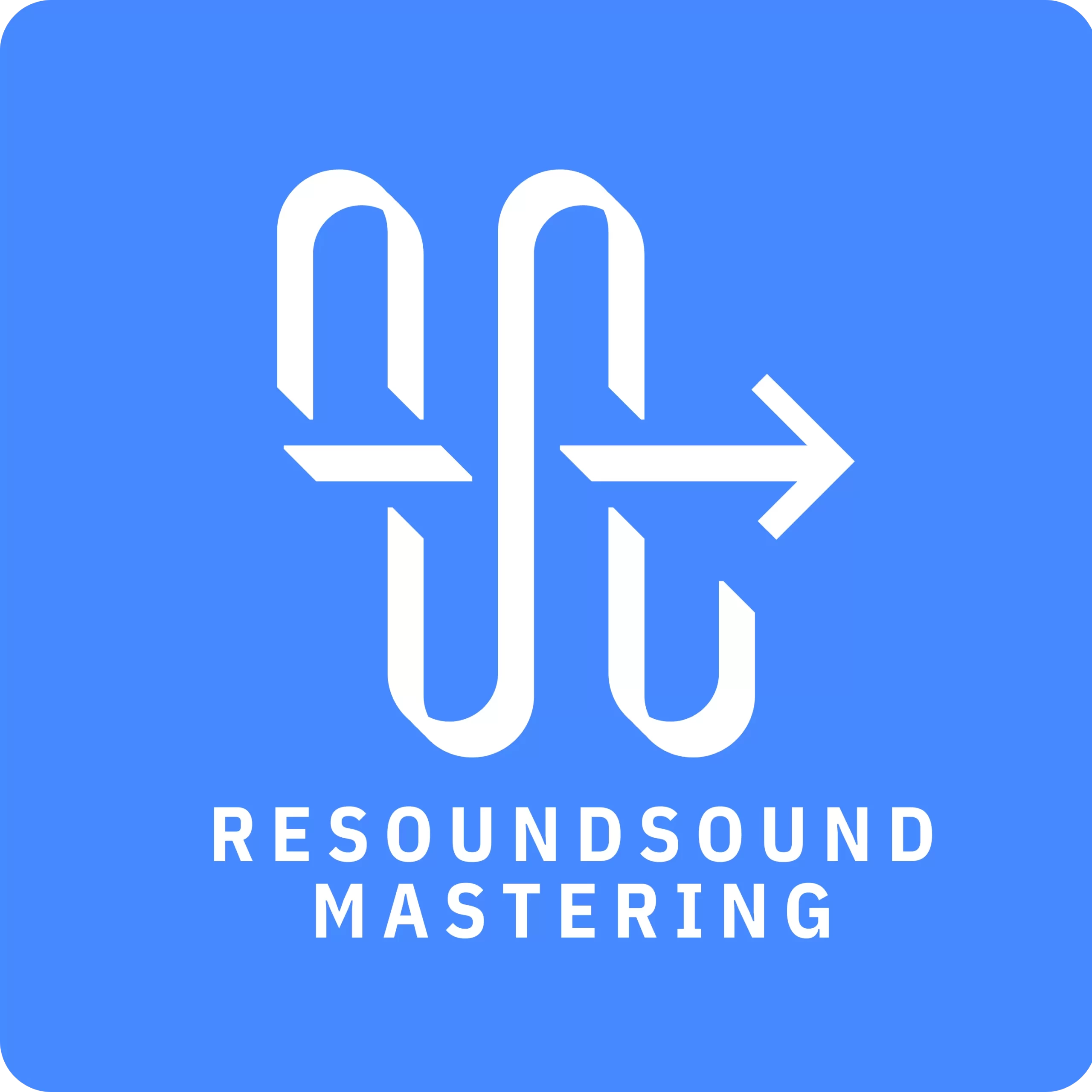
Leave a Reply